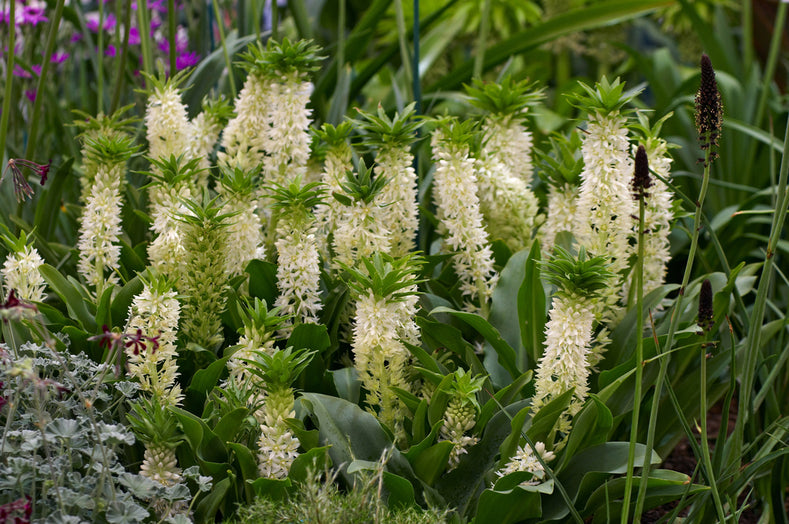Eucomis, commonly known as pineapple lilies, are striking plants with unique, pineapple-like flower spikes. These bulbs can add a touch of exotic beauty to your garden. Here's a comprehensive guide on how to grow and care for Eucomis bulbs.
1. Choosing the Right Location
- Sunlight: Eucomis bulbs thrive in full sun to partial shade. For the best blooms, choose a spot that receives at least 4-6 hours of direct sunlight per day.
- Soil: Well-draining soil is crucial. Eucomis prefers a loamy or sandy soil that does not retain excess moisture. Adding organic matter can improve soil structure and drainage.
2. Planting Eucomis Bulbs
- Timing: Plant Eucomis bulbs in the spring, after the last frost date has passed. This allows the bulbs to establish roots before the growing season.
- Depth and Spacing: Plant bulbs 10-15 cm deep. Space bulbs 15-20 cm apart to give them room to grow.
- Planting Procedure: Dig a hole, place the bulb with the pointed end up, and cover with soil. Water gently to settle the soil around the bulb.
3. Watering and Fertilising
- Watering: Keep the soil consistently moist but not waterlogged. Eucomis prefers regular watering, especially during the growing season. Reduce watering in the fall when the plant enters dormancy.
- Fertilising: Apply a balanced fertiliser (10-10-10) in early spring as new growth begins. Follow the manufacturer’s instructions for application rates. Avoid over-fertilising, which can lead to excessive leaf growth at the expense of flowers.
4. Care During the Growing Season
- Mulching: Apply a layer of mulch around the plants to help retain soil moisture and suppress weeds.
- Supporting Stems: As Eucomis flowers grow tall, they may need staking to prevent them from flopping over. Use stakes or cages to support the flower spikes if necessary.
5. Overwintering and Dormancy
- Fall Care: In colder climates, dig up bulbs in the autumn after the foliage has died back. Clean and dry the bulbs, then store them in a cool, dry place over winter.
- Winter Protection: In milder climates, you can leave the bulbs in the ground with a layer of mulch for protection. Ensure good drainage to prevent rot.
6. Pest and Disease Management
- Pests: Eucomis is relatively pest-free, but watch for common garden pests like aphids and spider mites. Treat infestations with appropriate insecticides or natural remedies.
- Diseases: Avoid fungal issues by ensuring good air circulation and avoiding overhead watering. Remove any infected plants to prevent spread.
7. Propagation
- Offsets: Eucomis bulbs produce offsets or "babies" that can be separated and planted to create new plants. Wait until the bulbs are dormant, then gently separate the offsets and replant them as you would the parent bulbs.
8. Enjoying Your Eucomis
- Blooming: Eucomis plants typically bloom in mid-summer, producing distinctive spikes of flowers topped with a tuft of leaf-like bracts.
- Cut Flowers: The unique flower spikes make excellent cut flowers for arrangements. Harvest when the blooms are just beginning to open for the longest vase life.
With these care instructions, you’ll be well on your way to growing beautiful Eucomis plants in your garden. Their exotic flowers and easy maintenance make them a fantastic choice for adding a touch of tropical flair.

